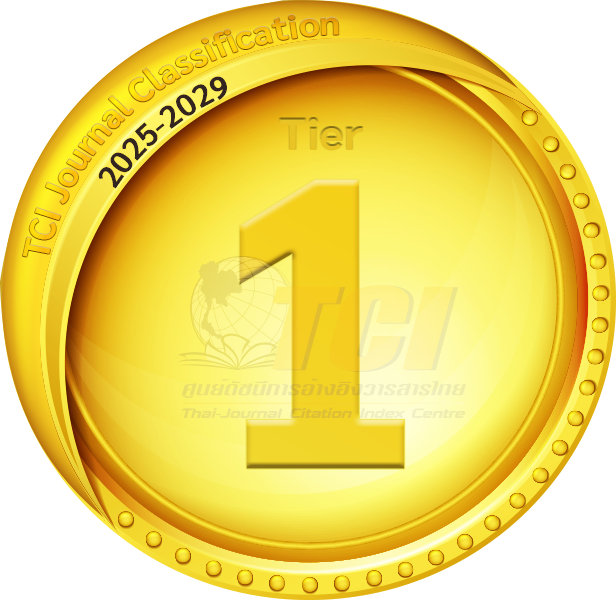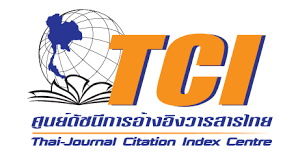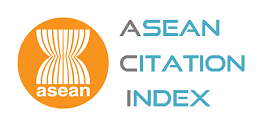A Study of East Sumba Textile Handwoven Animals “Hinggi” Motifs Ikat in terms of Dualism and Triple Patterns
- Erwin Ardianto Halim, Faculty of Decorative Arts, Silpakorn University, Bangkok, Thailand & Faculty of Arts and Design, Universitas Kristen Maranatha, Bandung, Indonesia, *Corresponding author, E-mail: ARDIANTOHALIM_E@su.ac.th
- Eakachat Joneurairatana, Faculty of Decorative Arts, Silpakorn University, Bangkok, Thailand
- Jirawat Vongphantuset, Faculty of Decorative Arts, Silpakorn University, Bangkok, Thailand
- Pairoj Jamuni, Faculty of Decorative Arts, Silpakorn University, Bangkok, Thailand
Abstract
This study investigated woven cloth motifs in terms of dualism and triple patterns. East Sumba's woven fabric is a traditional Sumba fabric that preserves and stores motifs and meanings from the community's perspective and is realized in physical forms through the medium of woven fabric. Every society has a culture, and the East Sumba people are no exception. Therefore, East Sumba people's beliefs are worldviews that pervade all aspects of their lives. This cultural viewpoint manifests itself not only in thoughts but also in behavior. East Sumba people developed actions that were notably visible in many items, particularly woven fabric motifs. East Sumba's woven fabric is a symbol of Indonesian identity. Sumba’s woven cloth motifs not only serve as aesthetics but also depict the strong interaction between humanity, nature, and East Sumba people's beliefs. This study was an in-depth examination of the message contained in the motifs on East Sumba's woven fabric using the concepts of dualism and triple patterns. East Sumba woven fabric documents not only cultural history but also advances cultural science in the world of interior design education, particularly for generation Z.
Keywords: Aesthetic, Woven fabric, Meaning, Motifs, East Sumba, Hinggi
DOI: 10.14456/jcsh.2023.5
References
Adams, M. J. (1969). System and Meaning in East Sumba Textile Design: A Study in Traditional Indonesian Art. Southeast Asian Studies Cultural Report Series, 16.
Anas, B. (2007). Motif Naga pada Hinggi Sumba Timur Sebuah Metamorfosa Estetik. ITB Journal of Visual Art and Design, 1(1), 55-65. https://doi.org/10.5614/itbj.vad.2007.1.1.5
Denzin, N. K., & Lincoln, Y. S. (Eds.). (2011). The Sage handbook of qualitative research. sage.
Djelantik, A. A. M., Rahzen, T., & Suryani, N. N. M. (1999). Estetika: sebuah pengantar. Bandung, Indonesia: Masyarakat Seni Pertunjukan Indonesia.
H Kara, O. A. M. A. (2014). 済無No Title No Title No Title. Paper Knowledge. Toward a Media History of Documents, 7(2), 107–115.
Halim, E. A. (2022). Kajian ragam hias pada rumah adat karo ditinjau dari etnomatematika. Jurnal arsitektur zonasi, 5(2), 274-280.
Halim, E. A., Darmayanti, T. E., & Amelia, C. (2020). Study of Aesthetic Elements of Karo Traditional House in terms of Dualism and Triple Patterns. American International Journal of Social Science, 9(1), 1-5. https://doi.org/10.30845/aijss.v9n1p1
Hasanadi, H. (2014). Membentuk karakter melalui penanaman nilai-nilai budaya rumah gadang Minangkabau. Suluah, 15(19), 42-59.
Hoop, A. N. J. (1949). Indonesische siermotieven. Ragam-ragam perhiasan Indonesia. Indonesian crnamental design. Jakarta, Indonesia: Koninklijk Bataviaasch Genootschap Van Kunsten En Wetenschappen.
Izzara, w. A., & Nelmira, w. (2021). Desain motif tenun songket minangkabau di usaha rino risal kecamatan koto tangah kota padang. Jurnal Seni Rupa, 10(2), 423-431. https://doi.org/10.24114/gr.v10i2.25928
Kartika, D. S., & Prawira, N. G. (2004). Pengantar estetika. Rekayasa Sains.
Kartiwa, S. (2007). Tenun ikat: ragam kain tradisional Indonesia. Jakarta, Indonesia: Gramedia Pustaka Utama.
Kattsoff, L. O. (1953). Elements of philosophy. New York, US: Ronald Press Co.
Kuntjoro-Jakti, R. D. R. I. (2010). Ragam hias nusantara. Humaniora, 1(2), 246-252. https://doi.org/10.21512/humaniora.v1i2.2866
Ningsih, y. S. (2019). Revitalisation of Sumba woven into fashion product for urban people as a target market. Serat rupa journal of design, 3(1), 61-76. https://doi.org/10.28932/srjd.v3i1.1056
Ratna, N. K. (2011). Estetika Budaya dan Sastra. Yogyakarta, Indonesia: Pustaka Pelajar.
Rizki, A. E., & Widyastuti, T. (2020). Kajian Visual Hinggi Dan Lau Untuk Upacara Kematian Suku Sumba. Texture: Art and Culture Journal, 3(2), 118-128. https://doi.org/10.33153/texture.v3i2.2979
Saputra, H. (2019). Seni dan budaya tenun ikat Nusantara. Res. Gate, 1, 1-15.
Soepratno, B. A. (2004). Ornamen Ukir Kayu Tradisional Jawa. Jawa Tengah, Indonesia: Semarang Effhar Offset.
Soeriadiredja, P. (2013). Rumah Tradisional Sumba: Tempat Pertemuan Manusia Dengan Para Dewa. Jurnal Museum Nasional, 47-60.
Sugiyono, D. (2010). Memahami penelitian kualitatif. Jakarta, Indonesia: Alfabeta
Sumardjo, J. (2013). Estetika Nusantara. Jawa Tengah, Indonesia: ISI Press Surakarta untuk.
Sumardjo, J. (2014). Estetika Paradoks. Jakarta, Indonesia: Kelir.
Sunaryo, A. (2009). Ornamen Nusantara: kajian khusus tentang ornamen Indonesia. Jawa Tengah, Indonesia: Dahara Prize.
Therik, J. A. (2017). Tenun Ikat Dari Timur (Keindahan Anggun Warisan Leluhur/(Ikat in Eastern Archipelago (An Esoteric Beauty of Ancestral Entity)): Diandra Kreatif. Yogyakarta, Indonesia: Diandra Kreatif.
Utomo, T. P. (2007). Arsitektur dan interior Nusantara: seri Jawa. Jawa Tengah, Indonesia: Kerja sama Institut Seni Indonesia (ISI) Surakarta dan UNS Press.

Indexed in


Search